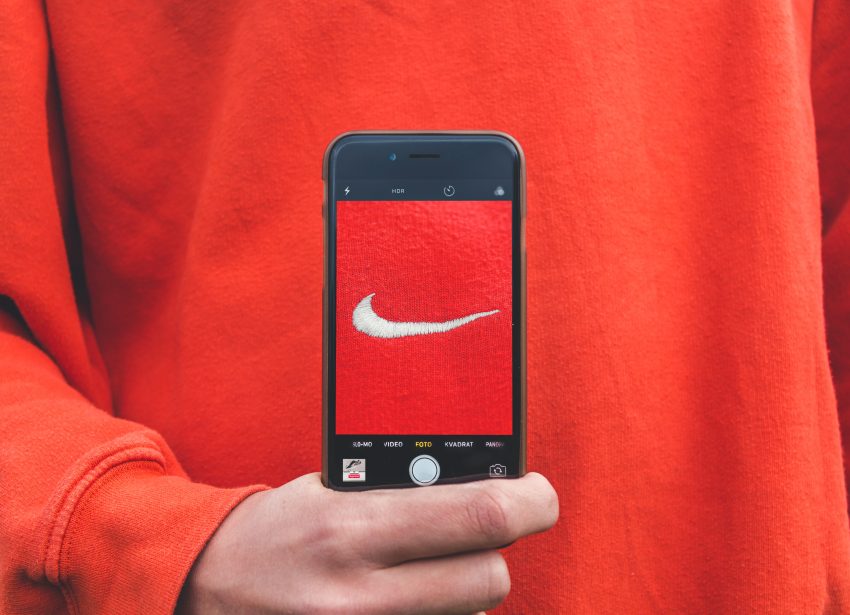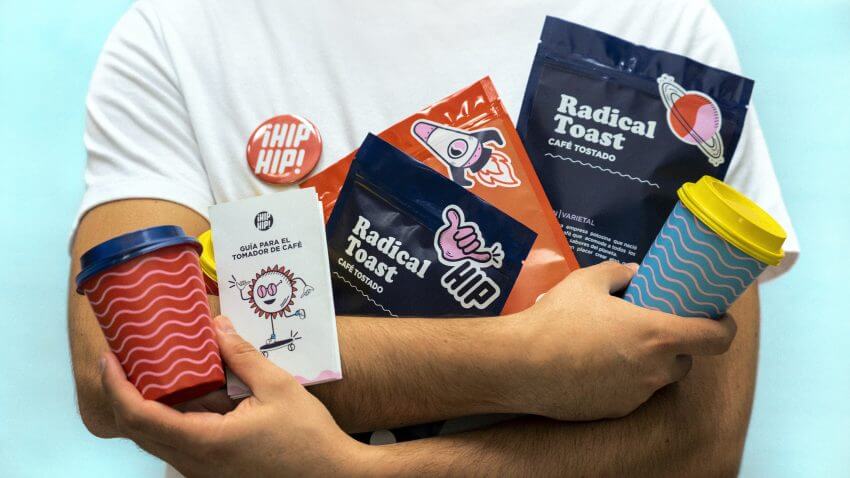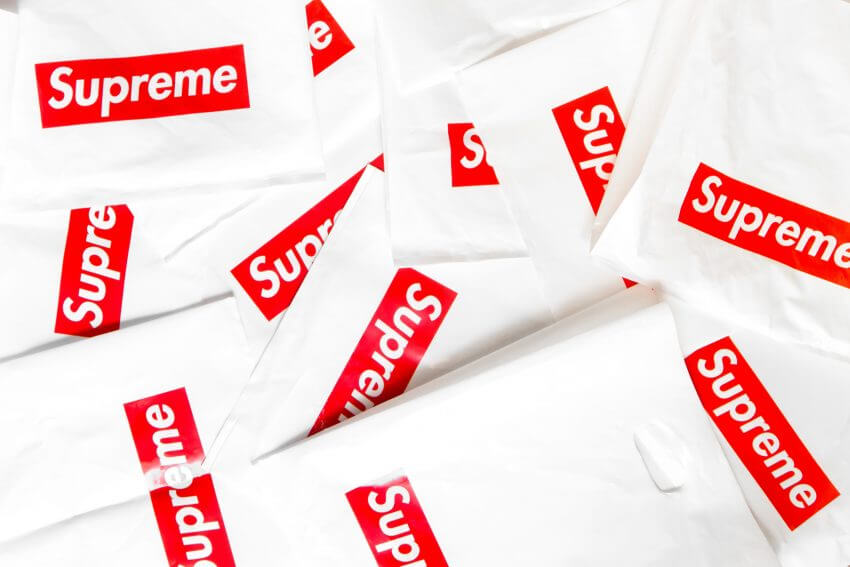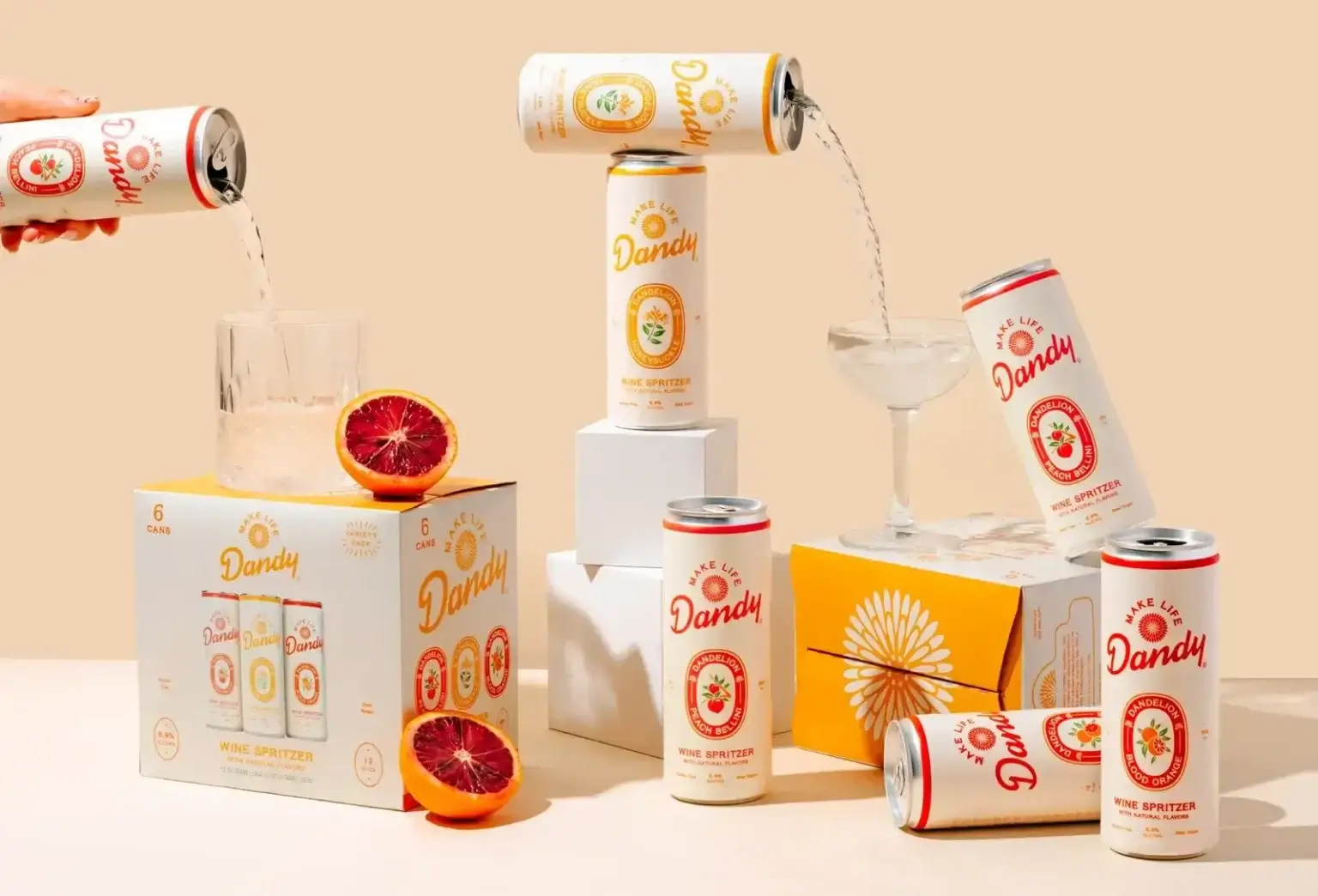Date
November 04, 2023Category
Blog, Design, Life, NewsReading Time
12 MinBranding 101: What is a Brand?
You hear the word ‘branding’ thrown around a lot these days. After all, building a brand that is recognizable and accessible in both the physical and digital realm has become more important than ever

You hear the word ‘branding’ thrown around a lot these days. After all, building a brand that is recognizable and accessible in both the physical and digital realm has become more important than ever – for companies and individuals alike.
Branding was already critical in the old, in-person shopping model of the last 100 years. But today, commerce has moved increasingly online, a trend that was only accelerated by the COVID-19 pandemic. With social media playing a huge part in how people engage with the world and a global marketplace accessible in just a few clicks, building a brand that makes an impression and connects with consumers has never been more important. But what exactly is a brand, and what makes for good branding?
In this guide, we’ll cover everything you need to know about how to build a great brand and why it matters so darn much. Let’s get started!

Your introduction to the basics of branding
What exactly is a brand?
A brand is a multi-faceted thing. In general, ‘brand’ refers to a product, company, or individual and how they present themselves and their offering to the world. It’s more than just a few photos and a logo or tagline; a brand comes from a philosophy, and should offer an experience or evoke a feeling for the consumers who engage with it. It’s an intangible idea or concept that, when done right, puts you ahead of the competition. (We actually made a video about this 11 years ago, if you’re so inclined.)
A classic example of great, impactful branding is Nike. Nike has been heralded as one of the most successful brands in the world. Why? Because when you think of Nike, you probably immediately think of three things: ‘just do it,’ their iconic swoop logo, and their sneakers – but let’s face it, the sneakers themselves come last. That’s because Nike has done a great job associating their brand with an experience, not just a product. The word Nike conjures up feelings of conquering fears, overcoming adversity, and winning races despite the obstacles. This powerful emotional association makes us more likely to go online and buy their latest sneaker release. It empowers them to release new products, beyond their sneakers, and know that they’ll have a loyal audience willing to buy.
Here’s how they did it. (Hint: the swoosh is good, but it’s not the singular key to their success) .
From early on in their development, Nike partnered with the biggest athletes in the world. Then, they leveraged those partnerships to create ads that showcase those individuals (and others) persisting despite the odds. They carried that imagery and feeling into their color stories, static ads, well-known tagline, and any other product or physical or digital space that carries the Nike name. If Nike were to throw an event, you could easily imagine how it would look, sound, and feel. Without looking it up, you probably know roughly what Nike’s website and social media look like. That’s because Nike’s brand is an entire experience, right at our fingertips, well-executed and consistent.
So what is a brand? It’s the whole picture of how a product, company, or individual shares what they do with the world. It’s the defining characteristics that make an offering unique and memorable, and it starts with a driving feeling, an emotion, a customer experience and extends into everything that brand does and makes.

The business of branding
Ok, that’s all well and good, but maybe it’s a little bit fluffy, so let’s talk brass tacks. Why is a good brand good for business?
Well, brands are, first and foremost, business tools that can be directly correlated with measurable Return on Investment (ROI). The brand of Nike itself may be intangible, but the actual company of Nike that sells physical products is not. Consumers are invested in the brand of Nike. They want Nike shoes over other shoe makers because the shoes are Nike.
That makes Nike’s brand the company’s ultimate competitive advantage – one that ensures they will continue to sell millions of sneakers for years to come. Investing in a great brand is one of the soundest investments you can make when building or growing a company. The stronger the brand, the higher the chances of customers choosing your product over a competitor. The right brand will attract more customers, who are then more likely to post your product on social media, which results in word-of-mouth marketing that helps you grow with less stress.
So, what comprises a winning brand? What needs to go into creating the devotion that Nike wields over all of its consumers? We broke down all the most essential elements of a modern brand.
Excited to get started?
Why wait? Sure, you can keep reading to learn the key components that make up a brand – but if you want to jump in right away, we’re here at the ready. Work with Urban Influence and you’ll get expert advice and branding done right.

The 9 key components of a brand
Why wait? Sure, you can keep reading to learn the key components that make up a brand – but if you want to jump in right away, we’re here at the ready. Work with Urban Influence and you’ll get expert advice and branding done right.
– The brand compass
– Brand archetype or classification
– Brand personality
– Your competitive advantage or USPs
– Visual identity– Messaging
– Brand architecture
– Overall experience
– Brand promises
A brand is, arguably, a living, breathing entity that is created when all of these different parts are strategized, executed, and brought together. If you’re able to do all of these things with excellence, you will have yourself an irresistible brand.
Of course, easier said than done, right? So let’s take a closer look at each component.
1. The Brand Compass: Your True North
As the name implies, the brand compass is the summary of the most important truths about your brand. Some people call this the “big why”. It’s the driving force for where your company is headed and why and comes out of your brand strategy ( which includes research and positioning). To create your brand compass, your team will need to sit down and write out the purpose, vision, mission, and values of the company.
Your vision should bring your ultimate end goal into focus. That is, where you want to see the brand heading and how you hope it will impact the world around you. To get there, you need a mission statement that is strategically placed in line with your objectives that takes into account real-world milestones you can use to measure your progress.
In short, your brand compass needs to answer the question, “Why?”
– Why did you start the company?
– Why are you selling a certain product or service?
– What do you hope to achieve?
Once all of these questions are answered, you will have your compass. You can (and should!) use this compass to inform decisions about your branding and to get through the different challenges, successes, and unforeseen changes that pop up along the way.
2. Branding Classification
The classical archetypes are: creator, ruler, caregiver, jester, citizen, lover, hero, magician, rebel, explorer, sage, and innocent.
An archetype represents a universal and enduring expression of meaning and communication, instilling humanity into your brand’s vision, mission, and values. This is how you are going to bring your brand’s deepest, most authentic truth to life.
The archetype you choose should align with your ideal customer, creating the truth and trust that they crave in your branding. Trust is the most important element in developing an intimate relationship with your customer.
That said, one way that brands have found to stand out is to consider the competitor field and choose an archetype that is less represented in the space. Think about what Geico did for insurance – choosing an archetype that’s more aligned with a rebel or jester versus the prior industry standards of caregiver, ruler, citizen, and sage. No one could say it didn’t make them stand out!
3. Brand Personality
From an overarching archetype, we can move into the more nuanced elements of your brand. The brand personality is the spectrum of characteristics and behaviors that are uniquely associated with your brand.
If your brand was a human being, this is how they would look and sound to the people around them. In the example of Nike, you could say that the brand is a rebellious underdog who is quiet, hard-working, and poised to be the best athlete in the room. With Apple’s branding, you might think of a coffee-shop startup founder who is stylish, classy, and forward-thinking.
You get the picture – a well thought out brand personality is easy to identify and relatable to your customers. In the last decade plus, this has become even more important, as brand personalities have taken on fairly literal manifestations on social media. Today, it’s common to see major brands engaging with consumers directly on social media and beyond – and garnering followings based on their personality and original content (we know, we know, what a world).

4. Your Unique Advantage
Personality and voice aside, one of the most important things you need to consider when putting your branding together is what sets you apart from the competition.
Thanks to advertisement targeting features online, you should assume that your ideal consumer is being exposed to all of the content you don’t want them to see from your competitors.
You will need to take into consideration your business’s unique value as well as the customers you serve and their pain points. Why do they follow you in the first place? Play to their personal wants and needs.
To figure out your advantage, you need to ask, what is it that your brand does better than any other business today? You need to know what your competitive advantage is at all times if you want to stand out. It is critical that you not only know your Unique Selling Propositions (USPs), but that you are able to articulate them to your audience, who are, again, undoubtedly also being targeted by ads from your competitors.
Here’s our pro tip. To overcome this, one of the best things you can do is identify a singular value proposition, like price or speed of delivery, and clearly and frequently communicate your advantage to your consumers.
5. Visual Identity and Branding
By nature, humans are visual creatures. So it follows that visuals are critically important to conveying the feel and message of your brand. Most of the marketing we see today is online, where visuals comprise a huge part of creating a quickly identifiable, scroll-stopping brand. Visuals are how you stand out from the crowd in a space as crowded as Instagram or Facebook.
You visual identity can (and should!) include:
– logo
– color scheme
– typography
– iconography
– photography
– videography
Your colors, shapes, and fonts need to be chosen carefully to match all of the different elements you’ve put together so far. If your brand is supposed to be mysterious and rebellious, then a pink and purple color scheme with a unicorn logo probably won’t make much sense. (Sure, you could pull off branding with a mysterious, rebellious unicorn with pink sunglasses and a purple skateboard shrouded in sparkling fog, but is that the best way to convey what you want to say? I mean, maybe…)
Regardless of what you choose, be sure to do some research as it relates to color marketing, fonts, sounds, and so forth, so you can be confident that every element of your brand is lining up in a logical way and stands out next to the competition.
– and more
6. Messaging
Visuals are one thing, but messaging is a whole different ball game. The verbal identity of your brand will consist of a name, tagline, brand voice, story, and copywriting.
The name and tagline are usually the immediate face to the world, which is why they should be strategically developed in-line with all of your other brand features.
Never underestimate the value of quality copy as well. The messaging is where you can humanize your brand and directly communicate what it is you feel, see, and do to your audience. It should feel like they are talking to an old friend when they read your messaging. Messaging is where all the things you’ve hammered down – the archetype and personality, your key advantage and big why – can really come out to play. Visuals grab attention. Messaging lets you start creating relationships with your customers.
7. Brand Architecture
Your brand architecture is the culmination of all of the names, colors, symbols, and visual language that come together to create your unique user experience. Brand architecture should be intentional and intuitive, founded on all of the research done to get to this point.
This is how you will position various business offerings into one focus that is easy to digest and not confusing to the consumer.
From a practical standpoint, when we talk about brand architectures we often talk about the more literal organization structure relating to how the brand is implemented. They can be:
– monolithic (singular master brand with sub-brands)
– endorsed (parent brands that have endorsed this brand)
– or pluralistic (parent brands with varying relationships and divisions)
8. Overall Experience
The brand experience refers to how your brand sounds, feels, smells, tastes, and looks to a consumer. It’s the entire experience of the brand if it were a person, someone you were taking a walk with outside. The most successful brands in the world have a brand experience that is memorable, creative, authentic, and most importantly: consistent.
When reviewing your brand experience, step back and think about the sum of all the parts of the elements you’ve created. Are they all in agreement and telling the same story? Do they tell the whole story you set out to tell, or is something missing? You want to make sure that when you put all the hard work you’ve done on your brand together, it fits together and does what you want it to do.
A great exercise to make sure your brand experience covers all your bases is to think about what a physical experience created by your brand would look like. Imagine a room, an event, or a festival booth that brings to life all the things you’ve created. Do you have enough information to create a full, immersive experience that’s exactly on brand? How does it look and sound? What product or advantage are you featuring and how? How does your experience make people feel? Is there anything you could or should do to make it more memorable or distinct?
9. And Finally, The Pinky Promise
This is the promise you make to your consumers that you vow to never break. It’s a special bond they feel with your brand. Life is unpredictable enough. If we find a brand that’s reliable and keep its promises, we’ll turn to it over and over again.
When you think of an example like Volvo, they promise ‘safety’ to their consumers every single time. They’ve always delivered, and they want parents to know that their kids are safe in their vehicles.
You can express your pinky promise in many ways – using taglines, ads, messaging, and social media posts. You can come right out and state it explicitly, or you can imply it with different forms of marketing. Try and use a blend of these two options, knowing that each time you come out and explicitly state it, you will need to keep your word. Never make a promise to your consumers that you cannot keep. They are watching.
And those are the 9 key elements that go into building a great brand!
So, why should you care about branding?
Branding is the art by which your company is valued, seen, and processed by the world. It’s the way you communicate with every single consumer, partner, and stakeholder. Without a cohesive and strategic brand, people are not going to check out your product – and they are certainly not going to recommend it to their friends and family members.

Way to go! You just finished Branding 101.
As you can see, there are many moving parts that go into creating a great brand. That’s why it’s always a good idea to bring in the professionals, whether you’re building a new brand from scratch or looking to rebrand to create more impact.
Here at Urban Influence, we create award-winning brands. We take the time to get to know your business, then work with you to devise and craft a brand your customers will return to again and again.
BLOG
Related News
Sea allBlog, Code, Design, Life
Five Features On CodePen
Everyone in the pigeon coop has been busy working on projects and playing each other in ping pong, but that has not stopped us from sharing some code snippets on CodePen. There have been
Blog, Branding, Life, News
Designer Inspiration
When I find myself hitting a wall or looking for creative inspiration there is a manifesto I often read. I have kept a copy of it for years and it is generally one of the
Blog, Branding, Code, Design, Life, News
View Source On IPhone And IPad
If you’re anything like me, and for your sake I hope not, then you might have this problem of needing to check the nuts & bolts of every site you visit. On Chrome & Safari,
Blog, Branding, Code, Design
Why You Should Hire A Brand Agency
Whether you’re thinking about creating a new brand or engaging in a full-on rebrand project, hiring a brand agency is a smart move. After all, a simple update of your brand is rarely straightforward.



